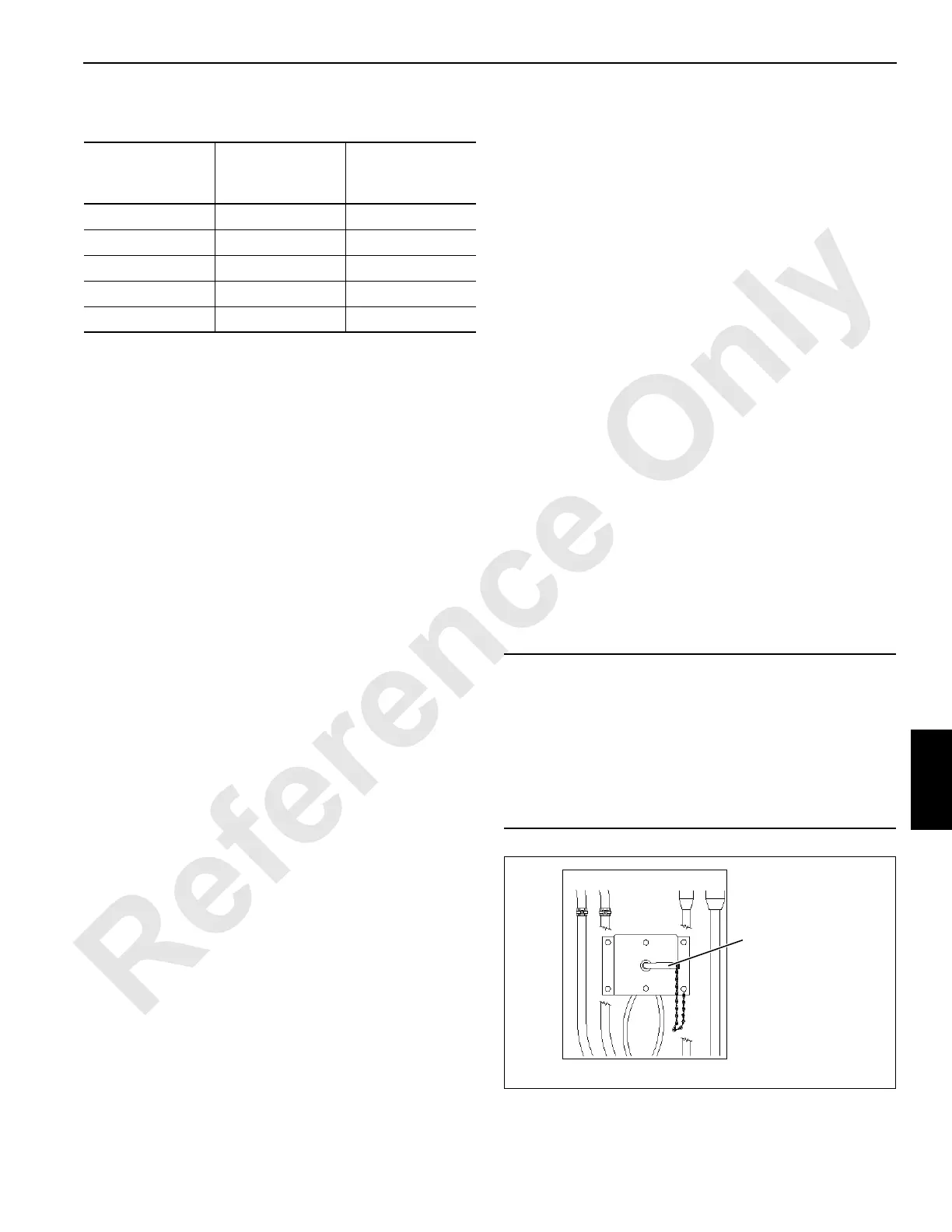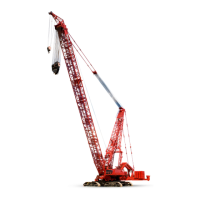Manitowoc Published 10-01-2012, Control # 045-08 7-3
777 SERVICE MANUAL POWER TRAIN
7
Table 7-3
Open Circuit Cell Voltage
NOTE: Detailed test information is provided by the meter
manufacturer.
High Resistance Test
A voltage drop (while cranking) of more than 0.2 volts
between the starting motor cable and ground can result in
hard starting regardless of a battery’s condition. The voltage
drop can be caused by a poor contact between the cable
terminal and ground or between the clamp terminal and the
battery post. Poor start-switch contacts and frayed, broken,
or corroded cables can also be the cause.
Quarterly
1. Thoroughly clean the batteries and the holder with
baking soda.
2. If provided, make sure the drain holes are open in the
holder. If water collects in the holder, drill drain holes.
3. Clean the posts and terminals. The posts can be lightly
coated with grease to prevent corrosion.
4. Make sure the hold-downs are in good condition;
replace faulty parts.
5. Replace frayed, broken, or corroded cables.
6. Replace the batteries if their containers are cracked or
worn to the point they leak.
7. Ensure good contact (tight) between the clamp terminals
and battery posts.
Make sure the hold-downs are tight enough to prevent
battery movement but not so tight to cause distortion.
Charging
If at all possible, the battery should be at room temperature
when recharging. Before a battery is recharged, it must be
thoroughly cleaned. Take care not to allow dirt to enter the
cells.
A battery should be recharged in the way it was discharged.
If it was discharged over a long period of time, it should be
recharged slowly at 6 to 10 amps for up to 10 hours. A rule-
of-thumb value for a slow rate is a current equal to about
one-half the number of plates per cell in the battery. A battery
with 13 plates per cell, should be charged at 7 amps.
If a battery was discharged rapidly (cranking until dead), it
can be recharged on a fast charger with an output of up to 40
amps for a maximum of 2 hours. If the electrolyte
temperature reaches 125°F or if it gases violently, the
charging current must be reduced or halted to avoid battery
damage.
For optimum charging results, adhere to the charger
manufacturer’s instructions.
Storage
When the machine is left idle for prolonged periods, it should
be run periodically to charge the batteries.
When storing a battery, make sure it is at least 75% charged
to prevent the possibility of freezing.
Follow your battery dealer’s recommendations.
Battery Electrical Disconnect Switch
See Figure 7-1 in following procedure.
The battery electrical disconnect switch is located in left side
enclosure. Turn switch handle counter-clockwise to
disconnect the batteries for crane maintenance. Make sure
engine ignition switch has been off two minutes before
disconnecting batteries.
% Charge Specific Gravity
Approximate
Open Circuit
Cell Voltage
100 1.260 2.10
75 1.230 2.07
50 1.200 2.04
25 1.170 2.01
Discharged 1.110 1.95
CAUTION
Engine Damage!
To avoid possible engine fault codes and undesirable
operation, make sure engine ignition switch has been off
two minutes before disconnecting batteries.
Do not rely on this switch to protect crane’s electronic
systems when welding. Disconnect battery cables at
batteries before welding.
FIGURE 7-1
A13892
Battery Electrical
Disconnect Switch
(Shown Enabled)

